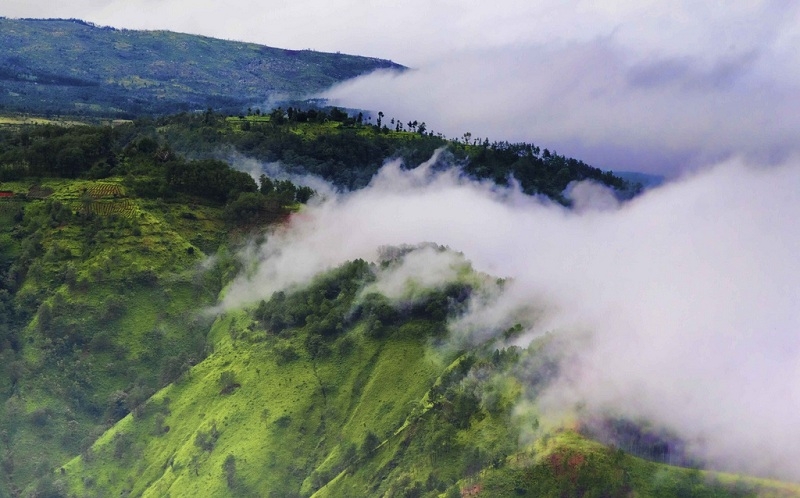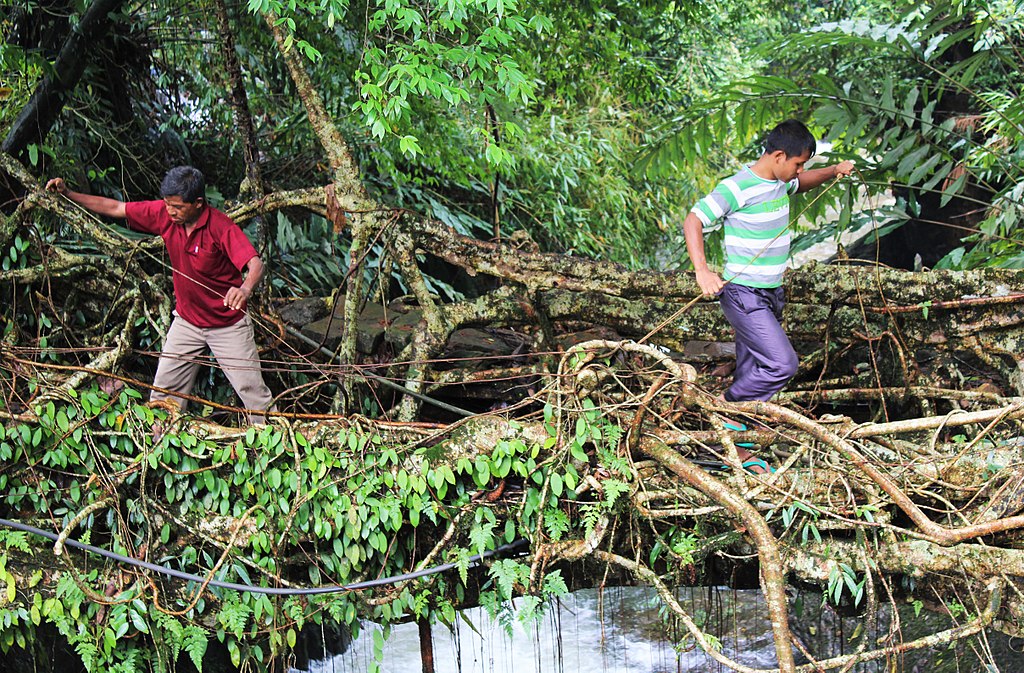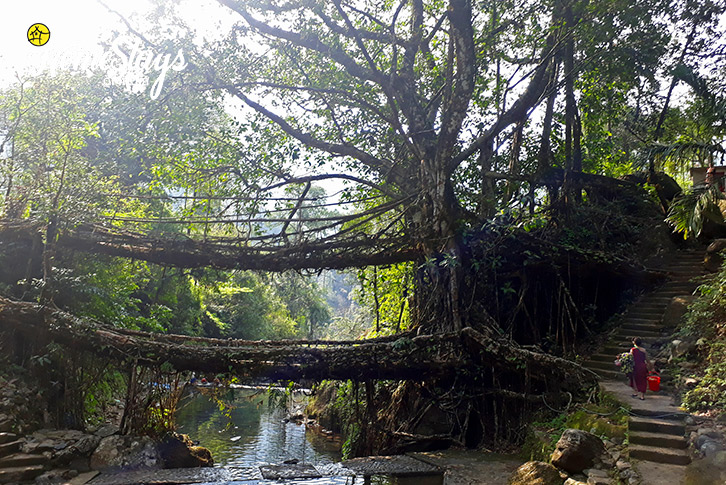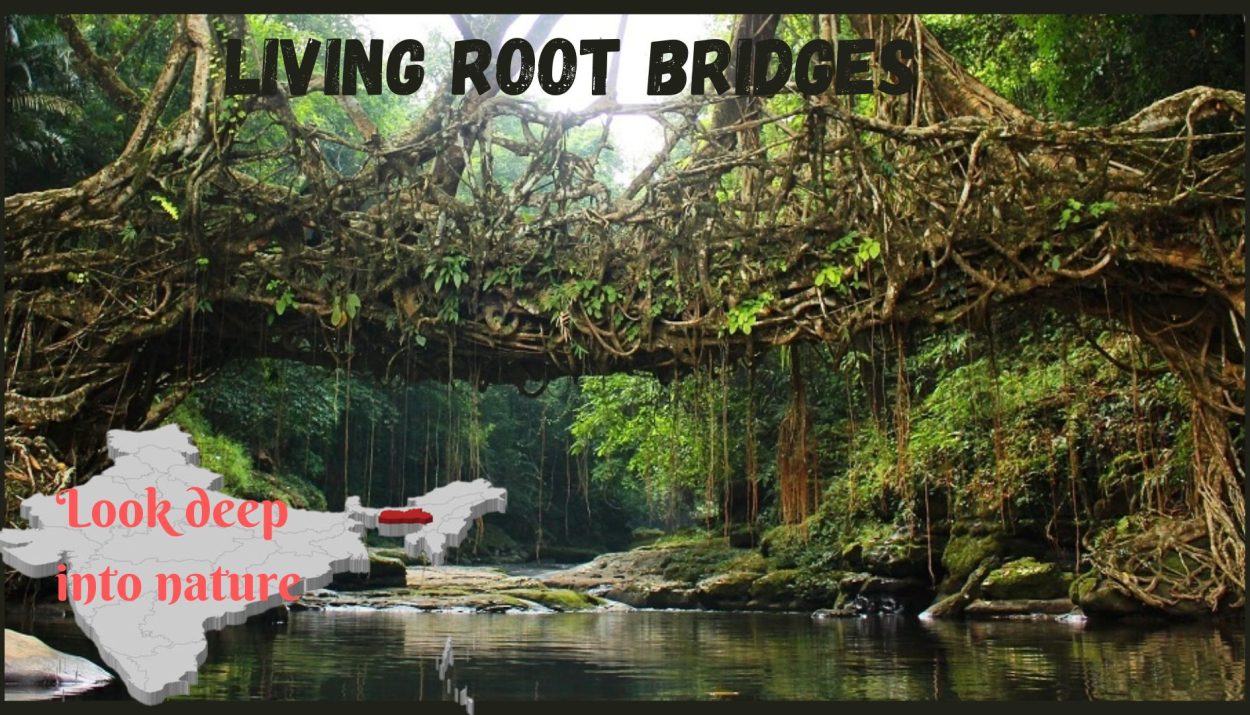Living root bridges are made from the roots of living trees. There are many such bridges in Northeast India to cross valleys and go into forests. They take years to develop. Some of them are several centuries old. It is a permanent architecture that will last and grow for generations. These bridges are very common in the state of Meghalaya.
Meghalaya means “the abode of clouds”. Its Mawsynram village is the wettest place in India. It rains a lot every year. Living here causes unusual difficulties and it’s not just the rain. Rivers change from gentle currents to raging tides. They become wild and unpredictable and almost impossible to cross. Then the local people came up with a great solution in the form of living root bridges.

Living root bridges are locally known as Jingkieng jri. It is a man-made bridge by nurturing the ecosystem. These bridges are made by the tribe of Khasi and Jaintia living in the Meghalaya state of India. It is a great example of a human-environment symbiotic relationship.
Method of making Living root bridge
A living root bridge can be made in several ways-
- The bridge is made using a rubber fig tree- Ficus elastica. It is a giant plant in these forests and can grow to dozens of meters tall. Locals manipulate the tree’s aerial roots to grow into bridges. The root bridge is formed from a small root that the local people shape or guide the roots using bamboo and after 40-50 years they get very strong roots, strong enough to walk on. The roots thicken and intertwine over time.

- Heavy rains pose a major problem for the indigenous Khasi tribes, making it difficult to cross rain-fed streams in the monsoon. Bamboo bridges rot and iron/steel was expensive. 200 years ago, the elders of the village came up with a unique solution in favour of nature. They directed the roots of young rubber figs (Ficus elastica) to grow through the pipe-like hollow stem of the betel nut. The roots of the fig trees cling tightly to the rocks. The betel nut guides the roots and provides them with essential nutrients. The entire structure is supported by a bamboo framework. Finally, mud, stones and sticks are inserted to complete the bridge. Usually, it takes about 15 to 20 years to complete. Once mature, some bridges can have as many as 50 people crossing them and can last up to 150 years.
Significance of Living root bridges
The tribals plant these bridges to serve the present as well as future generations. This is one of the few examples in the world where humans have found a successful and natural solution. A way of working with nature that can solve the problems caused by wild rivers.
Village members come together at specific times of the year, taking on the roles of architects, designers, engineers and retrofitters. These bridges protect them from strong currents, impossible crevices or cracks and violent waterfalls.
The original bridges, which have survived for many generations, play an important role in the network of jungle paths used by the mountain people to make their way to the plain markets.
Well-known living root bridges of Meghalaya
The longest (50 meters in length) known example of a surviving original bridge is the Rangthylliang Bridge, near the small Khasi town of Pynursla. The bridge is situated 30 m above the ground.

The most famous and wonderful double-decker living root bridge is at Nongriat village (12 km from Cherrapunji), but it requires climbing 3000 stairs, 2500 feet, 2.5 hours of trek, all one way.

The beauty of a living root bridge is that it gets stronger over time, unlike other normal bridges. It needs less maintenance.
The living root bridges have been included in UNESCO’s tentative list of World Heritage Sites.
Have you ever been there? If not, then you go and become a witness to this amazing sight.
Bon Voyage!
References
The Living Root Bridges of Meghalaya
THE “LIVING ROOT BRIDGES OF MEGHALAYA” A MAN-MADE MARVEL OF THE PEOPLE
Jingkieng jri: Living Root Bridge Cultural Landscapes- UNESCO







